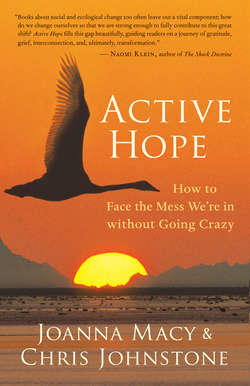Читать книгу Active Hope - Joanna Macy - Страница 21
На сайте Литреса книга снята с продажи.
Resource Depletion
ОглавлениеIn 1859, when the first of the US oil fields was discovered in Pennsylvania, the world’s population stood at just over a billion people. By 1930 it had doubled, and by 1974, with increased food production from oil-powered agriculture, it doubled again to 4 billion. We are already well on the way to another doubling, with global population passing the 7 billion mark in 2011. It isn’t just population that’s growing; the spread of modern lifestyles, as discussed above, has amplified our appetites, especially for energy.
In the twentieth century, global consumption of fossil fuels increased twentyfold. Oil has been our dominant fuel, and we are now consuming more than 80 million barrels a day. If we continue at this rate, we will use up available supplies within a few decades.12 Problems start long before we run out; as oil fields become depleted, the remaining reserves become more difficult and costly to extract. The same is true of the world’s supply as a whole. As a result, fuel prices are rising and the age of cheap oil is already behind us.
Each big rise in the price of oil over the last thirty-five years has been followed by a recession, with the price of oil doubling in just twelve months prior to the economic downturn of 2008.13 When oil production levels move past their peak and into decline (the point referred to as “peak oil”), the inability to meet demand will push prices through the roof.
We’re unlikely to be rescued by new oil source discoveries; for the last three decades more oil has been consumed each year than has been found in new reserves. By 2006 that deficit had grown to four barrels used up for every new barrel discovered.14 What’s more, the new reserves are either difficult to reach, as is the case with the deep-water wells over a mile beneath the ocean’s surface, or are of much poorer quality, as is the case with the tar sands in Canada. Our collective oil consumption cannot be sustained. If we don’t address this issue, we will be heading for a crash.
Even more crucial to life on our planet, the availability of freshwater is also in decline. A recent United Nations report warns that within twenty years, as much as two-thirds of the world’s population could be at risk of water shortages.15 Industrialization, irrigation, population growth, and modern lifestyles have dramatically increased our water consumption, with water use increasing sixfold during the twentieth century.16 Climate change has also been a factor, with more rain in some parts of the world but much less in others. Since 1970 severe droughts have increased, and the proportion of the Earth’s land surface suffering very dry conditions has grown from 15 to 30 percent.17
